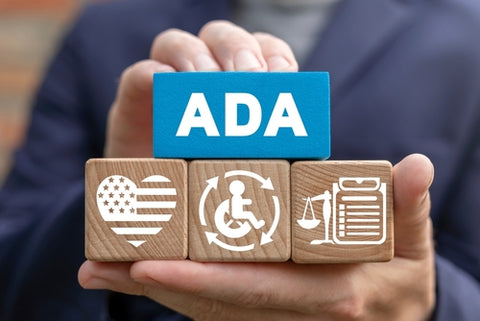ADA Lawsuits Are Rising. How Can Your Business Avoid Them?
According to Title III of the Americans with Disabilities Act (ADA), businesses are prohibited from discriminating against people with disabilities in their physical establishments or online websites. Website accessibility lawsuits have made up the majority of cases in U.S. federal court for almost ten years.
These are the figures:

- 2,722 Title III cases were brought in 2013 alone.
- The number of cases skyrocketed to 11,053 in 2019.
- Due to the pandemic, cases decreased to 10,892 in 2020.
- 11,452 ADA Title III cases were submitted to federal court in 2021.
- The number of cases in 2021 increased by 4% from 2020 and by 320% from 2013.
Why are more lawsuits being filed? What appears to be the problem?
Accessibility Issues with Websites Today

Public accommodations must provide people with disabilities with equal access to their facilities, services, and merchandise under Title III of the ADA. Few companies openly or consciously discriminate against customers with disabilities, although content limitations do happen when accessibility is not prioritized. These impediments can be against ADA Title III, which covers websites and mobile apps.
For instance, a lot of people with visual impairments use screen readers to explore the web. If an image doesn't have the alternate text and the navigation is inconsistent, screen reader users won't be able to see the entire website's information. These might qualify as grounds for an online accessibility lawsuit.
Another illustration is when hotels violate the ADA statute by failing to adequately describe accessible rooms on booking websites. Another solid justification for making a claim is this.
As a result, the considerable increase in ADA Title III litigation is linked to a deep understanding of the importance and necessity of website accessibility from a legal standpoint.
The ADA Web Accessibility Guidelines, Revised

The Department of Justice revised its web accessibility standards on March 18 to improve communication between businesses and customers with impairments. The advice covers a wide range of topics, including:
- The significance of and purpose for web accessibility
- The difficulties that individuals with disabilities have when visiting inaccessible websites
- The circumstances in which the ADA requires that website material be accessible and the best methods for doing so
The following characteristics of websites that are inaccessible to people with disabilities were also highlighted by the agency:
- Reliance on color to convey meaning
- Photos without alternate texts
- Inadequate color contrast
- Videos without captions
- Unreachable digital forms
- Using the mouse as opposed to the keyboard to navigate
Businesses of all sizes and industries can create an inclusive internet by adhering to the new web accessibility rules.
Website Accessibility is Required

By removing obstacles to both physical and digital resources, web accessibility is essential to building a more diverse and equitable community. The ADA emphasizes the concept of inclusive physical and digital facilities that are accessible to those with disabilities because of this. This ensures that people with disabilities have an equal opportunity to buy goods and services. Additionally, it can help firms avoid losing potential clients.
According to a study from 2019, the majority of government portals, news and information websites, and e-commerce websites are inaccessible to people who are blind or visually impaired. These people rely on websites that have been specially developed to accommodate their disabilities. They frequently employ a screen reading application that reads the text aloud. For them, using websites without these specialized tools makes it challenging to research and purchase goods and services.
As an alternative, accessible websites employ hardware and software assistive technology tools to improve the interaction of users with impairments with their content. Screen readers, alternate keyboards, screen magnifiers, and eye-tracking gadgets are some of these tools.
How to Prevent Lawsuits Regarding Web Accessibility

To prevent website accessibility litigation, businesses must adhere to the Web Content Accessibility Guidelines (WCAG). A web accessibility service provider that can evaluate the site's present state is a great alternative as well.
The website can be thoroughly inspected by ADA Web Accessibility. It can also aid in removing the obstacles found there and provide recommendations for marketing to clients with impairments. Businesses can develop a sound strategy for ongoing evaluation and monitoring of their ADA-compliant websites with assistance.
SHARE
See how your business can benefit from getting listed
on the most popular voice search platforms.

